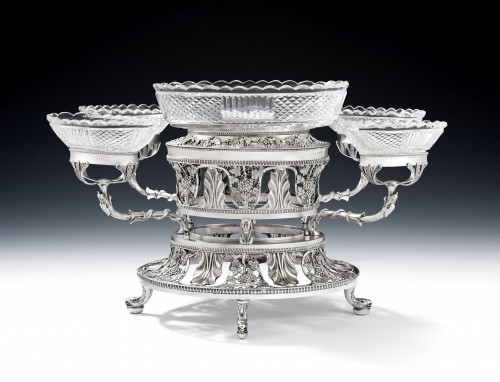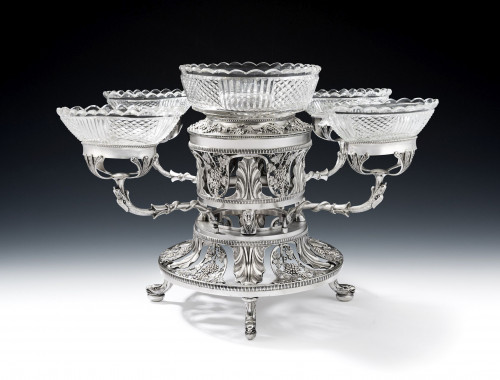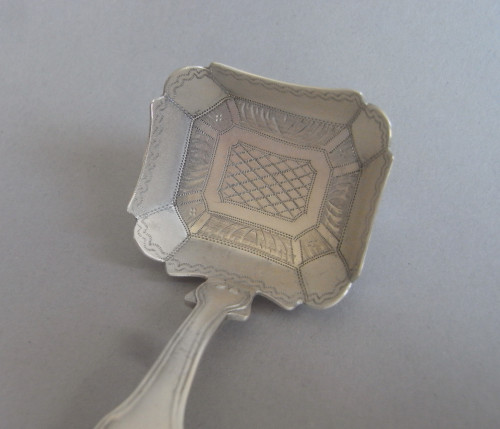An Early George III Cup & Cover made in London in 1763 by Augustin Le Sage.
An Early George III Cup & Cover made in London in 1763 by Augustin Le Sage.
108369
THE FARLEY CASTLE CUP
The Cup stands on a stepped pedestal foot which is decorated with a band of gadrooning, as well as swirl fluting and beading. The slightly baluster main body is also decorated with swirl fluting and bold beading, in addition to scrolls and very unusual horizontal linear waves. The impressively modelled side handles are decorated with leaf capping and foliate scrolls and are attached to the main body with foliate mouldings. The high domed cover terminates in a flame finial, above gadrooned, lobed and beaded designs. The front of the main body is engraved with a contemporary Armorial surrounded by a Rococo cartouche of scrolls, shells and foliate sprays. The cover is engraved with a contemporary Crest with the Motto Sempler Fidelis below. The Arms, Crest and Motto are those of Joseph Houlton Esquire of Farley New Castle and his second wife Pricilla, daughter of Walter White of Grittleton. White was formerly a Colonel in the parliamentary army and governor of Bristol. The cup is fully marked on the main body, and the cover, and is in excellent condition.
Weight: 70 oz
Dimensions:
1763
English
The Castle was largely built by Joseph Houlton Esq with stone from the old Medieval Farley Castle, which is now under the supervision of English Heritage, due to the important wall paintings in the Chapel. The Houltons bought the estate in 1702 and Joseph Junior set about creating an estate fit for his social status, as they had made their extensive fortune in Trowbridge as clothiers. He completely rebuilt the existing house complete with a 120 acre deer park. The Houlton family remained at the castle until 1899.
The work of Augustin Le Sage, who was Huguenot descent is scarce and sought after due to its quality in design and execution. Le sage is represented in numerous museum collections and had workshops in Cockspur Street, London, when this piece was made.
RELATED ITEMS





















